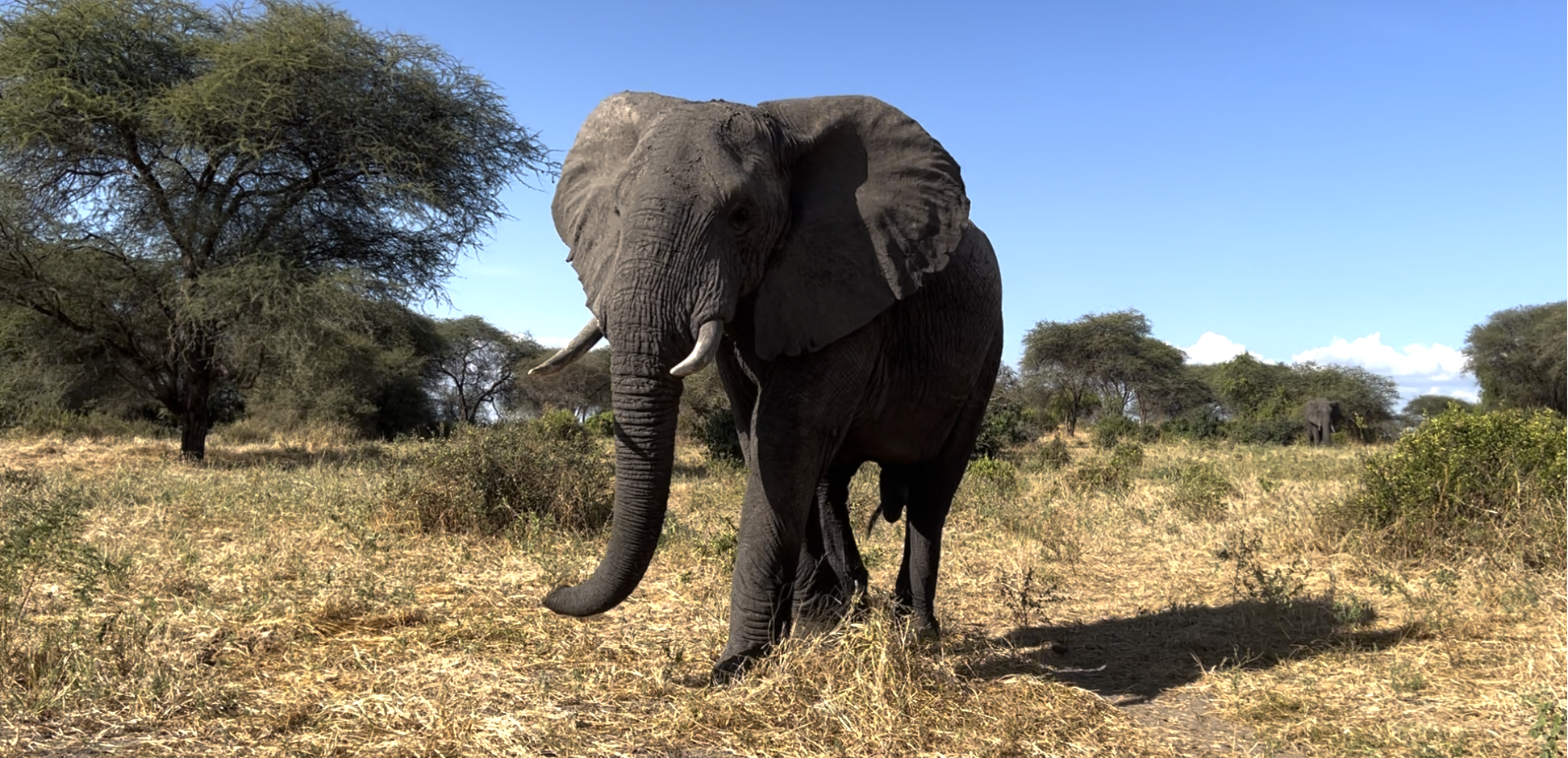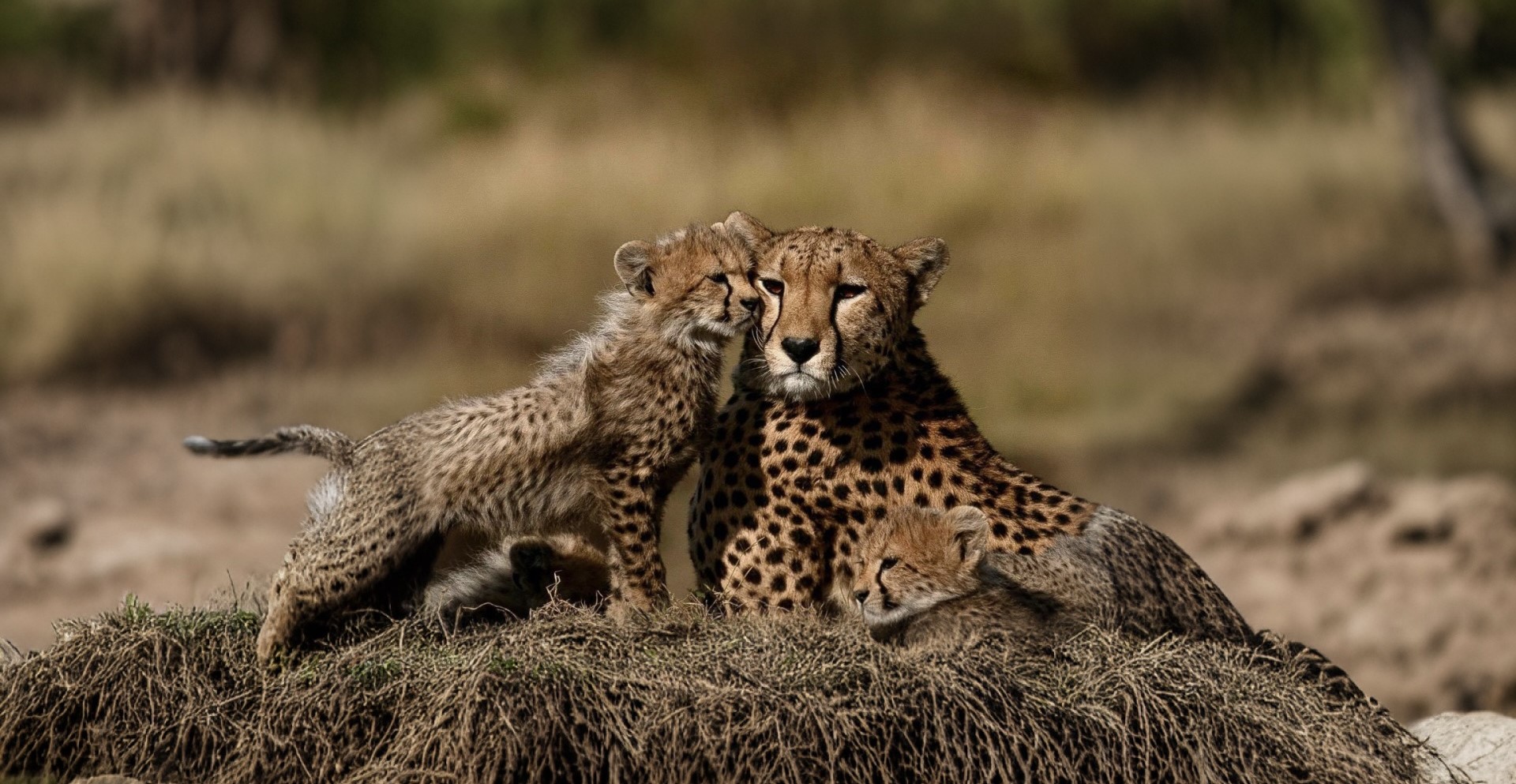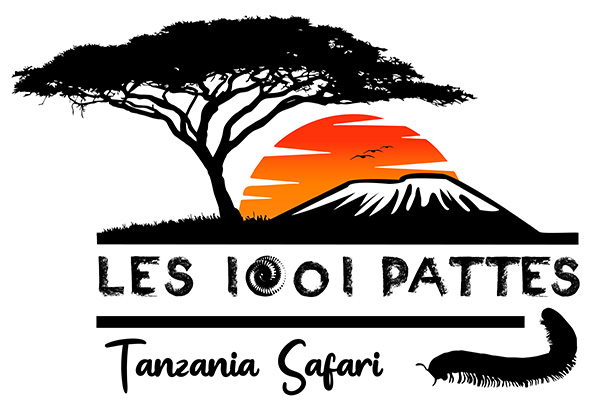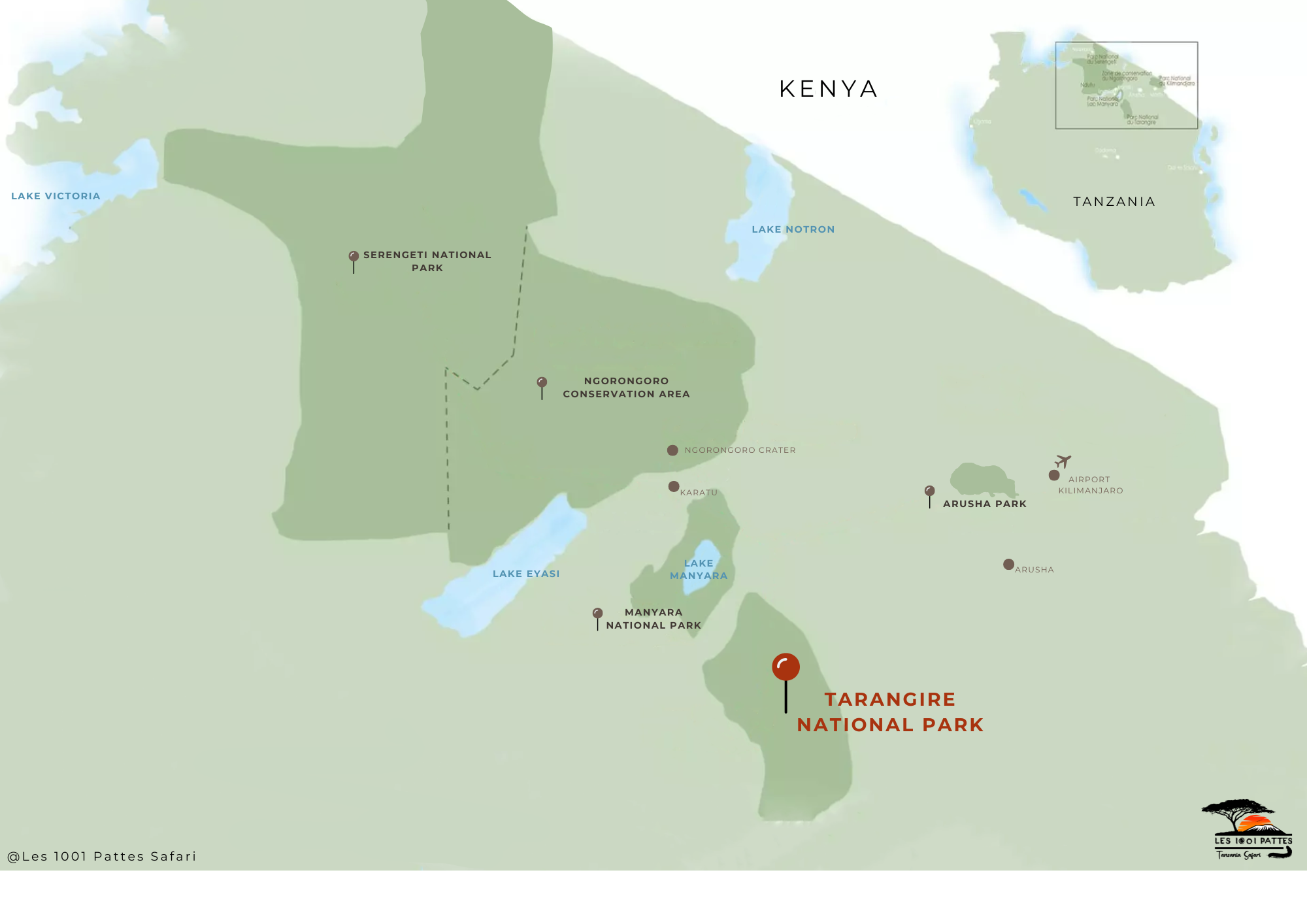In Tarangire National Park, you can discover the giant baobab trees, known as the ‘trees of life’, which can reach a height of 30 metres and a trunk diameter of 11 metres. They can store up to 32,000 litres of water, which is very useful for elephants and local people during the dry season. Here you will find the largest number of elephants in the world.
Tarangire National Park is fed by the Tarangire River and Lake Barunge, providing a vital source of water for the animals that come here to drink.
If you’re passionate about wildlife, this is one of the best parks to see animals in their natural habitat.


Discovering Africa’s wildlife
The park’s emblematic inhabitants include a host of majestic and fascinating animals such as :
Elephants : Elephants are the kings of the Park, with their imposing tusks and complex social behaviour, and can be seen moving gracefully across the grassy plains or quenching their thirst near waterholes.
Monkeys (Baboons & Vervets) : Monkeys, such as baboons and vervets, bring a playful energy to the savannah. Watching them interact socially and play with each other offers moments full of liveliness and curiosity.
Giraffes : With their slender silhouettes and distinctive long necks, giraffes soar over the savannah, nibbling at the tender leaves of the acacia trees. Their elegance and graceful gait are an unforgettable sight.
Zebras : Zebras, with their distinctive stripes, roam the vast expanses of land in herds. Their seasonal migrations are an impressive phenomenon that testifies to the incredible adaptability of these animals.
Hippos : Hippos, with their massive silhouettes and piercing eyes, often revel in rivers and lakes. Their characteristic mud baths are both a method of thermoregulation and an amusing sight to behold.
Wildebeest : The great wildebeest migrations are one of nature’s most spectacular events. These massive herbivores travel immense distances in search of fresh pasture, creating a vivid picture of movement and life.
Gazelles : The gazelles, graceful and light, leap across the grassy plains with dazzling agility. Their curved horns and delicate coats add a natural elegance to this wild picture.
Pythons : In the folds of tall grass and bushes, pythons can be seen basking in the sun or moving silently in search of prey. Their intricate patterns cleverly camouflage them among the grasses.
Leopards, Lions, Cheetahs : African felines, whether powerful lions, agile leopards or swift cheetahs, reign supreme at the top of the food chain. Watching them hunt or rest in the shade of an acacia tree offers a captivating insight into wildlife.
Buffalo : Buffalo, with their imposing mass and powerful horns, roam the land in search of pasture. Their presence adds a touch of robustness to the delicate balance of African wildlife.
Warthogs : Warthogs, recognisable by their curved tusks and distinctive appearance, roam the plains in search of roots and tubers. Their lively social behaviour adds a unique dynamic to the landscape.
Hyenas : Agile and opportunistic, the spotted hyena is a formidable predator of the savannah. Their characteristic laughter can often be heard at dusk, as they hunt or fight over the remains of their prey.
Impalas : Impalas, with their reddish-brown coats and lyre-shaped horns, often form impressive herds. Their exceptional jumping skills are an effective way of evading predators, creating scenes of graceful movement.
Ostriches : Ostriches, with their elegant feathers and long legs, parade across the savannah. These fast-running birds are renowned for their agility and ability to adapt to changing conditions.

Discovering Africa’s majestic birds
In the vast sky, more than 550 species of birds colour the atmosphere and contribute to the symphony of wildlife.
Brown Parrots : Brown parrots, with their richly hued plumage, add an exotic touch to the treetops. Their animated calls and aerial acrobatics captivate lucky observers.
Orange-Bellied Parakeets : Orange-bellied parakeets, with their brilliant feathers, create vibrant flights of bright colour across the sky. Their graceful movements and chorus of chirps bring sunny days to life.
White-Bellied Birds : These white-bellied birds, delicate and often exquisitely coloured, dot the branches of the trees. Their cheerful melodies complement the peaceful atmosphere of the savannah.
Helmeted Guinea Fowl : The helmeted guinea fowl, with its distinctly patterned plumage, often wanders in groups, adding an earthy note to the aerial dance. Their distinctive calls resonate throughout the wilderness.
Yellow-necked Machaon and Crested Francolin : These birds, with their elegant feathers and proud postures, embody aerial elegance. Their graceful flights and distinctive calls help orchestrate the ecosystem.
Yellow-collared Lovebirds : Yellow-collared lovebirds, symbolising love and fidelity, are often seen perched side by side. Their soft chirping adds a romantic note to the melody of nature.
Lilac-breasted Bird : These birds with their shimmering feathers make striking aerial incursions, dazzling observers with their beauty. Their acrobatics in flight add an artistic dimension to the skyline.
Mousebirds, Swifts, Barred Swallows : These masters of flight, with their exceptional agility, criss-cross the skies in search of food. Their aerial evolutions are an astonishing demonstration of aerodynamic perfection.
Starlings, Bee-Eaters, hammerkops : These birds, each with their own unique characteristics, contribute to the diversity of the aerial spectacle. Whether it’s the murmuring starlings, the brightly coloured bee-eaters or the hammerkops with their distinctive silhouettes, each adds its own nuance to the whole.
Plovers, Kori Bustards, Raptors : Plovers, majestic Kori bustards and raptors soaring through the skies complete the hierarchy of African birds. Their powerful flights and graceful dives are a statement of aerial power.

